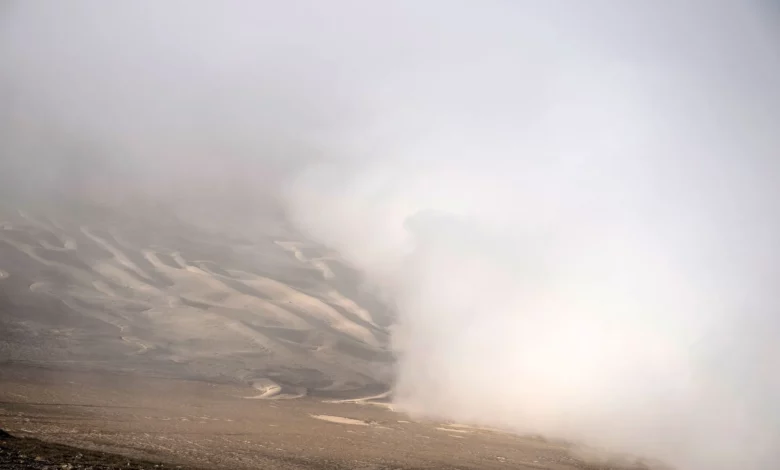
Fog harvesting is a relatively simple process. Mesh panels are hung between poles, and as moisture-laden clouds pass through the mesh, water droplets form and are channelled into pipes and storage tanks. Capturing water from fog on a large scale could provide a sustainable source of drinking water for some of the world’s driest cities, according to new research conducted in northern Chile.
Scientists studying the desert city of Alto Hospicio, where annual rainfall averages less than 0.19 inches (5 mm), say fog harvesting could help supply clean water to urban populations facing acute shortages. Currently, many of the city’s poorest residents rely on water delivered by truck, but clouds of fog that regularly gather over the mountain city could offer a sustainable alternative.
Fog harvesting is a relatively simple process. Mesh panels are hung between poles, and as moisture-laden clouds pass through the mesh, water droplets form and are channelled into pipes and storage tanks. The technique has been used on a small scale for decades in rural parts of South and Central America, as well as in Morocco, where one of the largest fog-harvesting systems operates on the edge of the Sahara Desert.
Dr Virginia Carter Gamberini of Universidad Mayor, who led the study, believes a “new era” of large-scale fog harvesting could provide a secure water supply in urban areas like Alto Hospicio.
Her team assessed water production rates using mesh panels and combined this with satellite data on cloud formation and weather forecasts. The findings, published in Frontiers of Environmental Science, show that the fog clouds forming over the Pacific Ocean and blowing across Alto Hospicio’s coastal mountains could sustainably supply the city’s slums with drinking water.



